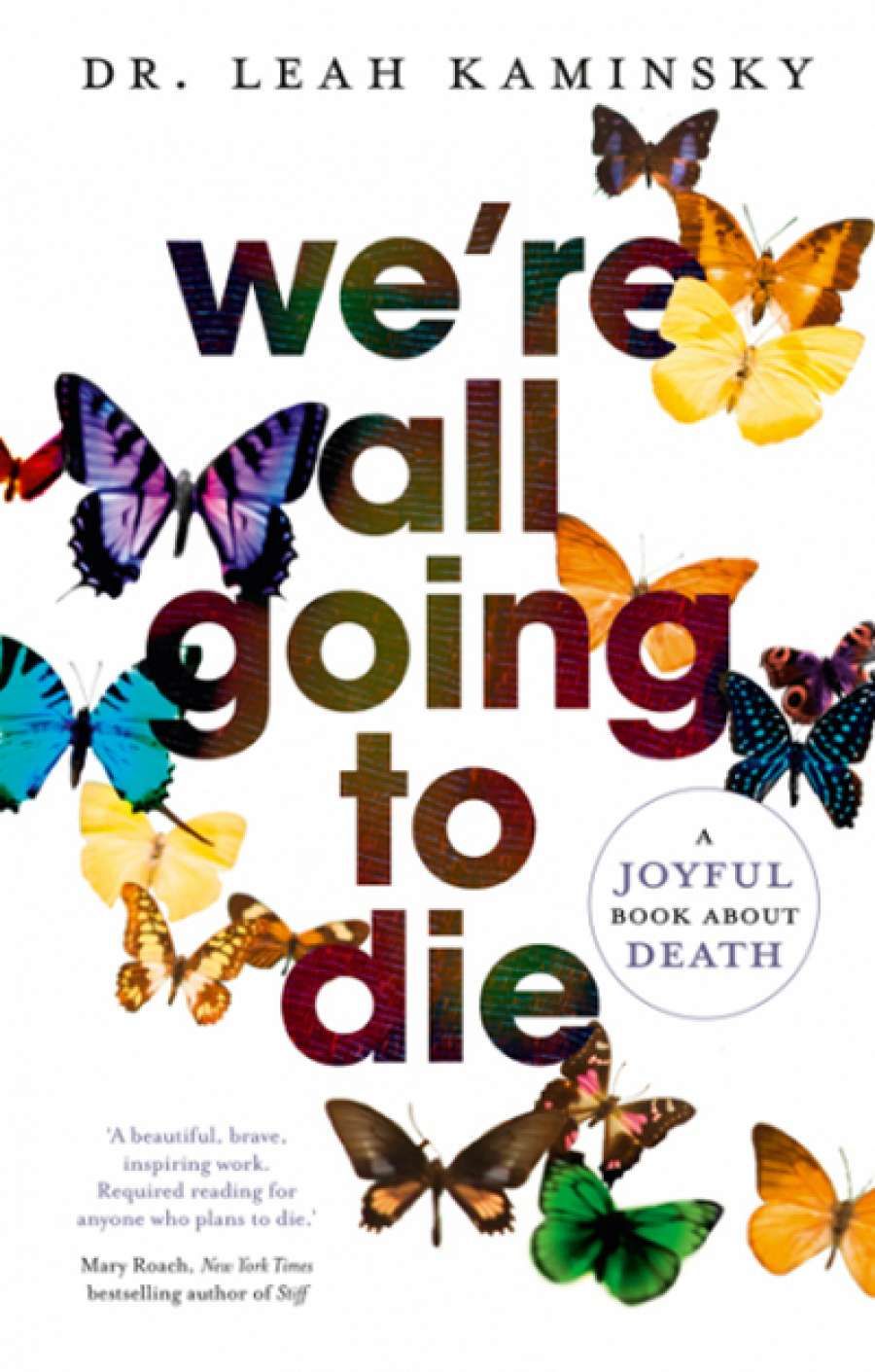
- Free Article: No
- Contents Category: Society
- Custom Article Title: John Funder reviews 'We’re all going to die' by Leah Kaminsky
- Book 1 Title: We’re all going to die
- Book 1 Biblio: HarperCollins $27.99 pb, 293 pp, 9781460749999
What the book does is to present a series of vignettes, in some instances case studies, documenting a patient’s fear of dying, or in some cases peace and resignation in the face of impending death. We are clearly all going to die: none of the hype about living to be 120 will change that. Mercifully, we know not the day, nor the hour thereof, in ‘normal’ circumstances: what many of us do know, for example those with aggressive metastatic cancer, is that the day is likely to be sooner rather than later. Sometimes, as the author recounts, it might not be a generalised fear of death, but a specific one – dying in childbirth, say. Sometimes it is the quiet decision to go for palliation rather than active intervention.
As a physician, I have a number of comments and questions arising. First, the case studies are excellent, well-chosen, and clearly presented. Kaminsky is unafraid to cite occasions of awful behaviour she experienced as a resident at the hands of male ‘seniors’. Secondly, it is important to acknowledge that a book cannot possibly cover all the bases. That said, I would have liked to hear from Kaminsky about those among us who live fairly orderly lives but do not particularly fear death: is this denial or wisdom, fulfilment or unreadiness? Kaminsky talks about the impact on her as a young woman of her mother’s sudden death. What about the effects on the family of the impending death of one of its members, whose ‘days are numbered’?
 Leah KaminskyGenerally, we need to go further into why in Australia (and the United States) we have gone so far in the medicalisation/hospitalisation of dying. An intensive care unit is not a peaceful or serene place to die: the ‘regular’ ward is better, and better still, if at all possible, is the patient’s own bed at home. ICUs are for severely ill or damaged persons with every chance of good survival, not a way station to the mortuary. We have superb palliative care, and in 2017 realistic use of appropriately high-dose opiates. Ten years ago, I had two PhD colleagues in Texas, a husband and wife: she was terminally ill with an inoperable, aggressively expanding brain tumour. She couldn’t speak, but every waking morning shrieked with pain. The attending physicians prescribed only low-dose opiates – she might become addicted – and no steroids to lower her intracranial pressure, because they would waste her muscles. Sweet Jesus!
Leah KaminskyGenerally, we need to go further into why in Australia (and the United States) we have gone so far in the medicalisation/hospitalisation of dying. An intensive care unit is not a peaceful or serene place to die: the ‘regular’ ward is better, and better still, if at all possible, is the patient’s own bed at home. ICUs are for severely ill or damaged persons with every chance of good survival, not a way station to the mortuary. We have superb palliative care, and in 2017 realistic use of appropriately high-dose opiates. Ten years ago, I had two PhD colleagues in Texas, a husband and wife: she was terminally ill with an inoperable, aggressively expanding brain tumour. She couldn’t speak, but every waking morning shrieked with pain. The attending physicians prescribed only low-dose opiates – she might become addicted – and no steroids to lower her intracranial pressure, because they would waste her muscles. Sweet Jesus!
One tension in the book remains unresolved. The opening chapters are full of growing up in Melbourne: this rings true and is a source of joy, at least to this reader. Then I come upon ‘crapshoot’, a ‘peek’, and the least relevant chapter, set on the east coast of the United States. Clearly, the target is the US market: I think that the persistent groundedness in Melbourne will be the major draw for American readers, not this incongruous tenth chapter.
Which leads to the final question: what is the target readership? This is not a book to be easily read and digested in a single session, even by the most resolute person. It helps if you are familiar with the touchstones – Atul Gawande and Jerome Groopman, The New Yorker, the New York Review of Books. For all its easy-to-read style, this is a serious book: my fear is that it will be read by those not particularly afraid of dying, rather than those who are but may not have the author’s insight into the condition, or her resolve. I hope that, having written the book, Kaminsky is now less afraid of death and has thereby learned ‘to live in a more vital, fearless and truthful way’ (pardon the adjectives), in the concluding words of the back-page blurb.


Comments powered by CComment